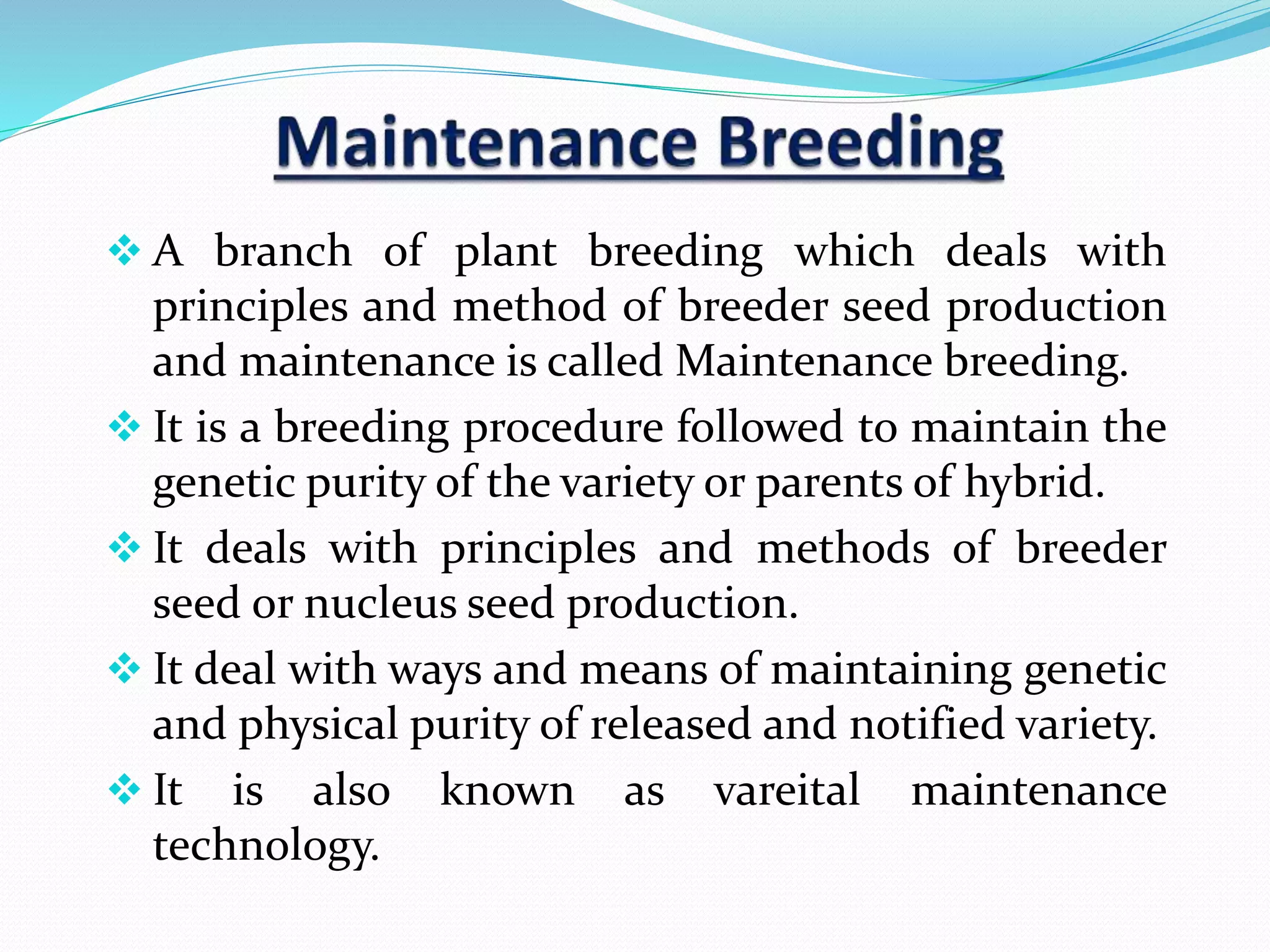Maintenance breeding deals with producing and maintaining breeder seed and genetic purity of crop varieties. It involves selecting high quality plants, growing them in isolated fields, and removing off-type plants to prevent genetic deterioration over time. The document outlines procedures for maintaining nucleus seed stocks of new and established varieties, including harvesting individual plants, growing progeny in isolated double rows, and discarding any off-type plants before harvest. It also describes maintaining parental lines of hybrid crops through hand pollination and growing inbred lines in isolated fields with rogueing.


















